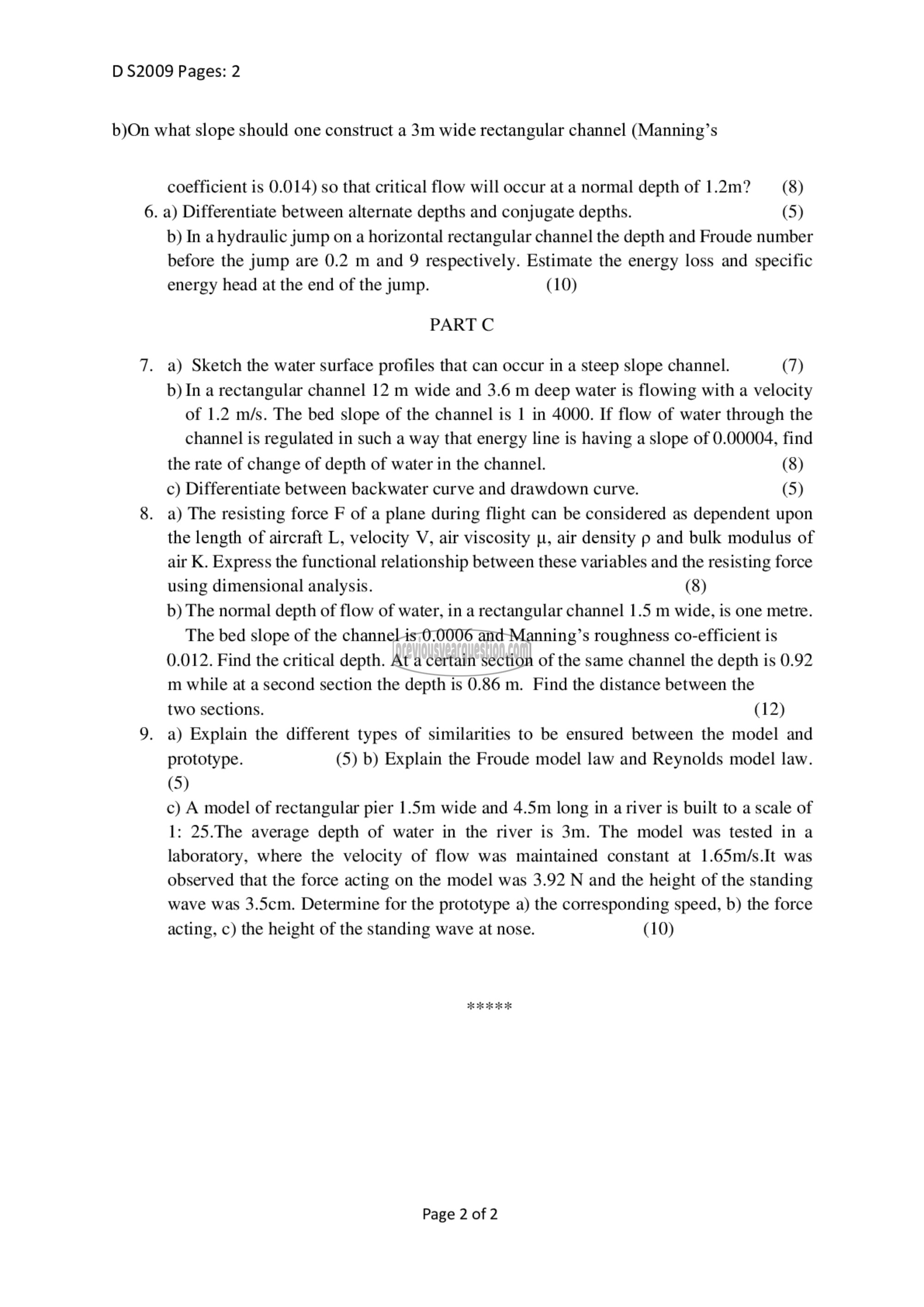APJ ABDUL KALAM TECHNOLOGICAL UNIVERSITY Previous Years Question Paper & Answer
Semester : SEMESTER 4
Subject : Fluid Mechanics- II
Year : 2018
Term : DECEMBER
Branch : CIVIL ENGINEERING
Scheme : 2015 Full Time
Course Code : CE 206
Page:2
0 52009 Pages: 2
b)On what slope should one construct a 3m wide rectangular channel (Manning’s
coefficient is 0.014) so that critical flow will occur at a normal depth of 1.2m? (8)
6. a) Differentiate between alternate depths and conjugate depths. (5)
b) In ahydraulic jump on a horizontal rectangular channel the depth and Froude number
before the jump are 0.2 m and 9 respectively. Estimate the energy loss and specific
energy head at the end of the jump. (10)
PART ^
7. a) Sketch the water surface profiles that can occur in a steep slope channel. (7)
b) In a rectangular channel 12 m wide and 3.6 m deep water is flowing with a velocity
of 1.2 m/s. The bed slope of the channel is 1 in 4000. If flow of water through the
channel is regulated in such a way that energy line is having a slope of 0.00004, find
the rate of change of depth of water in the channel. (8)
c) Differentiate between backwater curve and drawdown curve. (5)
8. a) The resisting force F of a plane during flight can be considered as dependent upon
the length of aircraft L, velocity സ്, air viscosity பூ, air density 9 and bulk modulus of
air K. Express the functional relationship between these variables and the resisting force
using dimensional analysis. (8)
b) The normal depth of flow of water, in ೩ rectangular channel 1.5 m wide, is one metre.
The bed slope of the channel is 0,0006 and Manning’s roughness co-efficient is
0.012. Find the critical depth. At a certain section of the same channel the depth is 0.92
m while at a second section the depth is 0.86 m. Find the distance between the
two sections. (12)
9. a) Explain the different types of similarities to be ensured between the model and
prototype. (5) b) Explain the Froude model law and Reynolds model law.
(5)
0) A model of rectangular pier 1.5m wide and 4.5m long in a river is built to a scale of
1: 25.The average depth of water in the river is 3m. The model was tested in a
laboratory, where the velocity of flow was maintained constant at 1.65m/s.It was
observed that the force acting on the model was 3.92 N and the height of the standing
wave was 3.5cm. Determine for the prototype a) the corresponding speed, b) the force
acting, c) the height of the standing wave at nose. (10)
Page 2 of 2
